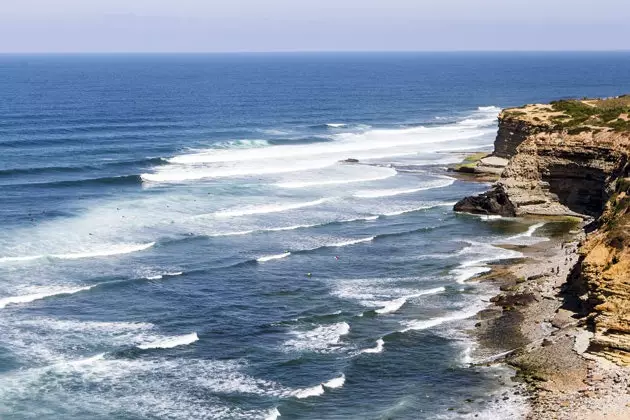
Ribeira d'Ilhas beach, in Ericeira
In the arrival hall of the Lisbon airport I see many French, English and Germans wearing the shirts of their respective football teams. The World Cup is about to start and the fans make a stopover to continue towards their final destination: Brazil . What I could never imagine is that the man I am about to meet has here, in Portugal, a fame similar to that of the footballers supported by these followers on the other side of the Atlantic. The door opens and a man comes out pushing a cart with two surfboards, we greet each other and, instantly, people approach McNamara to take pictures with him.
Garrett is a man in his forties with short very dark hair. Apart from his Hawaiian origin, and perhaps his hat, at first glance few things refer to the typical image of a surfer (with long hair bleached by the number of hours spent in the sun in the salt water). ). Just like his look , the sport that he practices does not have much to do with the cliché associated with the most conventional surfing either . While the latter usually revolves around a lifestyle based on relaxation, the good life and appreciation of the beauty of nature, Garrett McNamara's big wave surfing is an extreme survival sport. "The force of the water can break bones or even amputate an arm," Garrett explains to me without fanfare.
We are sitting at the Nazaré lighthouse, the spot where in 2013 he surfed an incredible wave with a height of 30 meters . At the moment the sea is calm, but he explains to me that in winter the waves reach up here, the place where he married Nicole, his wife, last year. Nazaré is a quiet fishing village . It was here that Vasco da Gama thanked the Virgin after his successful return from India, and also where Stanley Kubrick made a series of exceptional photographs of fishermen in 1948 . Both facts are very interesting, but neither of them helped at all to put Nazaré on the tourist map. What has managed to attract international attention to this place is the wave that breaks right next to the Nazaré fort. The reason for this exceptional phenomenon is found on the sea floor: an underwater ravine with a length of 150 kilometers pointing like an arrow towards the lighthouse. The currents that converge in the ravine move towards the coast until it suddenly narrows and the bottom of the sea rises like a step, raising the masses of water a short distance from the coast.
Garrett was born in Massachusetts and he started surfing at age 11, when his family moved to Hawaii. The first time he considered making a living from this sport – to which he dedicated between four and eight hours a day training – was when he was 17 years old. "My entire career has been built around Mother Nature," McNamara tells me, always keeping an eye on the world's weather, as travel to places with storm warnings to take advantage of the waves . During his career as a professional surfer he used to spend the winters in Hawaii and the rest of the year he would travel to compete in Japan, California, Brazil, Chile, Peru, Australia and Indonesia. It would not be until the year 2000 when the European continent would find a place in the surf spot map. Belharra, in the south of France, was the first European wave that caught his attention.
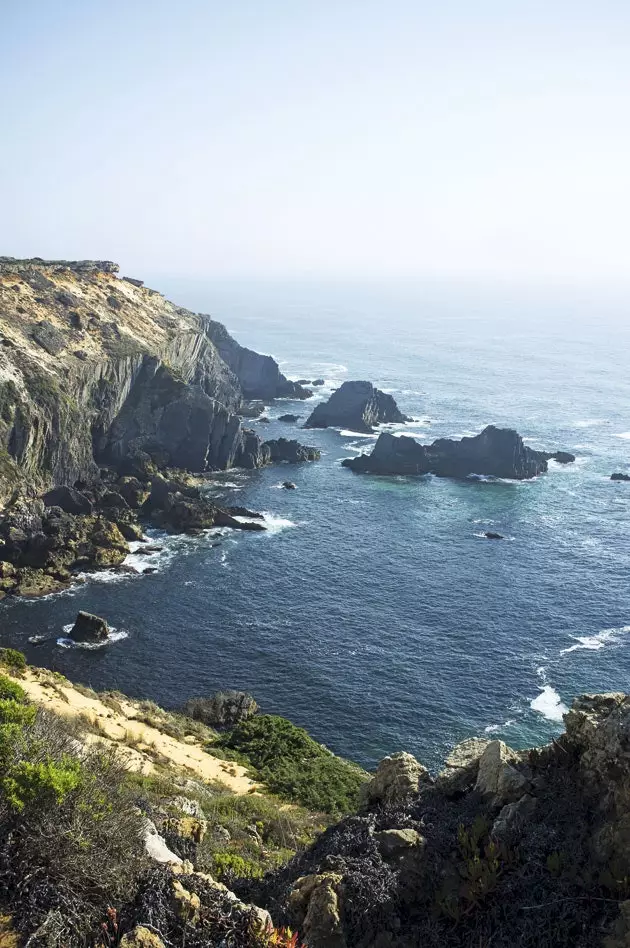
Rugged cliffs along the Ruta Vicentina.
Five years later, Garrett received an email with a photograph of the shocking wave that was forming in a small town between Lisbon and Porto, accompanied by an invitation to Nazaré to see if it was possible to surf "the monster that has been flooding houses and restaurants for centuries during the winter months." “You feel very alive, you are literally like a grain of sand and you have no control, you have no idea what is going to happen, or how long you are going to be under there spinning around. But it's a lot of fun, I enjoy and accept the moment. It is a very intense experience. It's just you and the wave, I love it . As long as I don't end up injured, I love it,” she points out.
To understand this feeling you have to remember that once you fall into a wave of this size and the incredible mass of water breaks above you, you can easily be spinning without knowing which way is up or down for 60 seconds. That is, that eternal minute before you can breathe again... that is, if the wave next to you doesn't break right on top of you. This is the reason why big wave surfing requires exceptional physical preparation. Garrett, for example, wakes up at four in the morning every day, starts his day with a yoga session, and then spends an hour in the gym. He dedicates some time to the projects he is involved in and, again, more training: with the help of weights, in some caves near his house, he dives to spend between one and two minutes traversing the seabed. Thanks to these exercises, McNamara is able to hold his breath for up to four and a half minutes. . "I don't want to give the wrong image to youth, nothing I've achieved in my life has been thanks to alcohol," Garrett explains to me about his boycott of a big wave surfing competition that has a spirited brand as its main sponsor. .
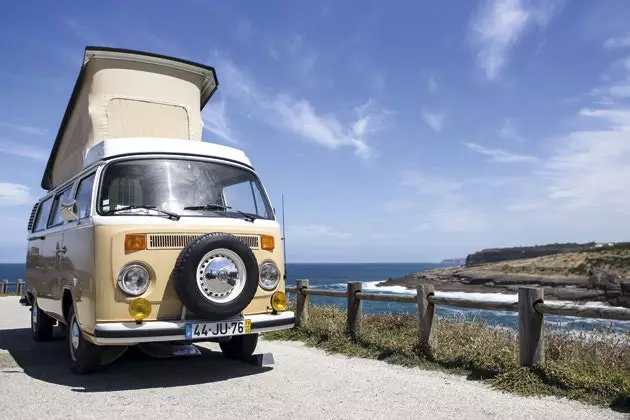
The small beach of Coxos is a must for surfers.
In Mercedes Benz he found a patron who causes him fewer ethical concerns. They started by supporting the project with vans for him and his team, but last year the collaboration intensified: Garrett and the German carmaker's engineers – along with designers of Polen Surfboards surfboards – pooled their knowledge to build the perfect board for the wave conditions of Nazaré . Although the height of these fascinates him, Garrett's goal is always the same as that of any surfer: to be inside the tube. As they say, it is a unique sensation, a magical moment in which time seems to stop. Garrett – who decided to buy a house in Nazaré – is very clear that he is going to settle here during the coming winters. He is in love with the country, its people, its food and, of course, its part of the Vicentine coast. , represents a third of the Portuguese surface, but only 5% of the country's population lives there. A figure that suggests the isolation, tranquility and closeness to nature that you can find.
Our first stop is Herdade da Matinha , a small country hotel where – right from the welcome – you will feel at home or, at least, at the home of good friends. Mónica and Alfredo, the owners of this high-rise rural tourism, give off so much dedication, passion and happiness that make staying here a unique experience. Good waves. He explains to me: “In Portugal there are thousands of good places to surf, like Peniche, perfect for beginners. Once you know how to handle the board, you can travel up and down the coast . And that without mentioning Madeira or Azores. In the whole country there are more than a thousand excellent waves”.
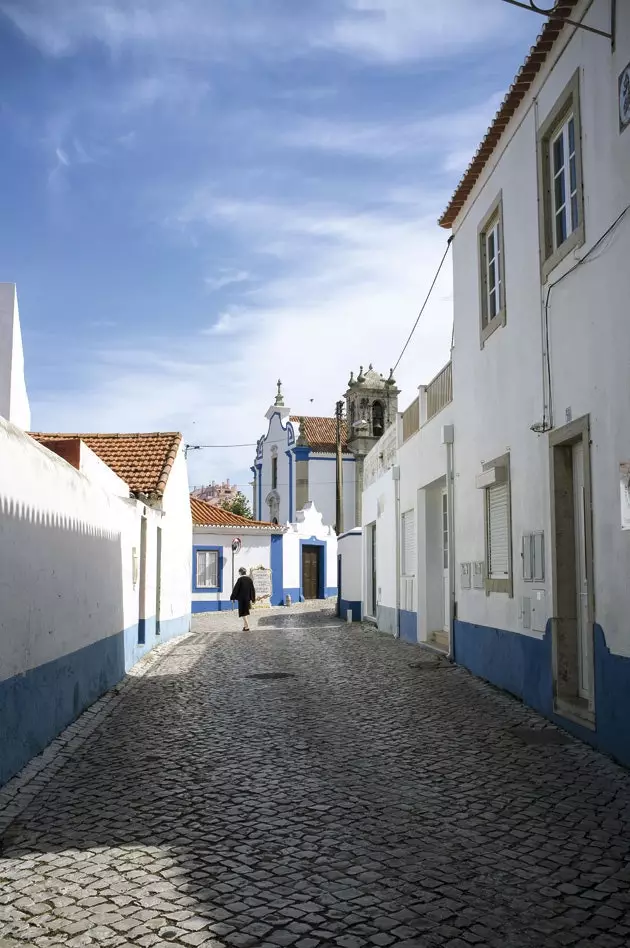
The buildings of the Portuguese parish of Ericeira maintain their nineteenth-century appearance.
Dropping off Garrett at the airport, who is also traveling to Brazil for the World Cup and to teach some young Silicon Valley billionaires to surf (including the founder of the world's best-known social network), I decide to go. to do just that: surf. My next destination will be another of the regions recommended by the surfer: the Vincentian coast. The Alentejo , the region where you can find the greatest jazz music, a fantastic atmosphere, excellent cuisine, mesmerizing surroundings and incomparable hosts are a simple recipe for peace and relaxation. Since during the last few days everything has revolved around waves, beaches, boards and world records, today I prefer to approach Portugal from another angle.
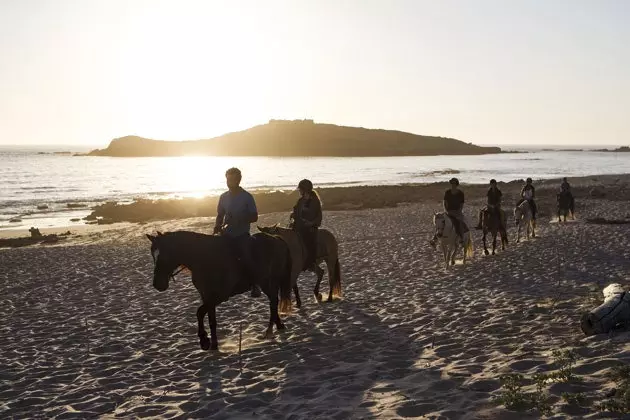
Horseback riding on the beach
To compensate, I set out to discover nature on dry land. We start with a walk along the coast leaving from the town of Porto Covo, which is part of the Ruta Vicentina . The landscape is so colorful that it seems as if an artist has dropped a box of oil paints on top of it. White clouds tint a sky so deep blue that it is second only to the color of the Atlantic. There are also rocks on the cliffs of all the shades that geology offers. From the earth, reminiscent of the red of the Portuguese flag, plants of all possible greens sprout – to complete the colors of the flag. In each hill that I overcome presents a different panorama , beginning with a dry environment strewn with poppies, rosemary and pansies scattered in a sea of sand, passing through a landscape of meadows so fertile that they are reminiscent of Scotland or Ireland, until arriving at some red sand dunes that evoke the remote interior from Australia. During some stages of the walk you will be presented with landscapes as if from another planet.
The history of Portugal , even that of the North American for whom I came to this country, is linked to the sea , so this walk could not be less: bordering the steep coast section by section until reaching an altitude of about 120 meters. From this point the waters of the Atlantic are perceived to be calm, but Rudolf , a Swiss man who has been on the Vicentine coast for more than 30 years and who now guides us through this breathtaking piece of nature, tells me that this only happens for a few days a year. It begins to get dark and I discover another of the attractions of the Costa Vicentina: here the stars shine like in few European places. Due to the low population in the region, there is very little light pollution that could interfere with this show that celebrates the Alentejo sky every night.
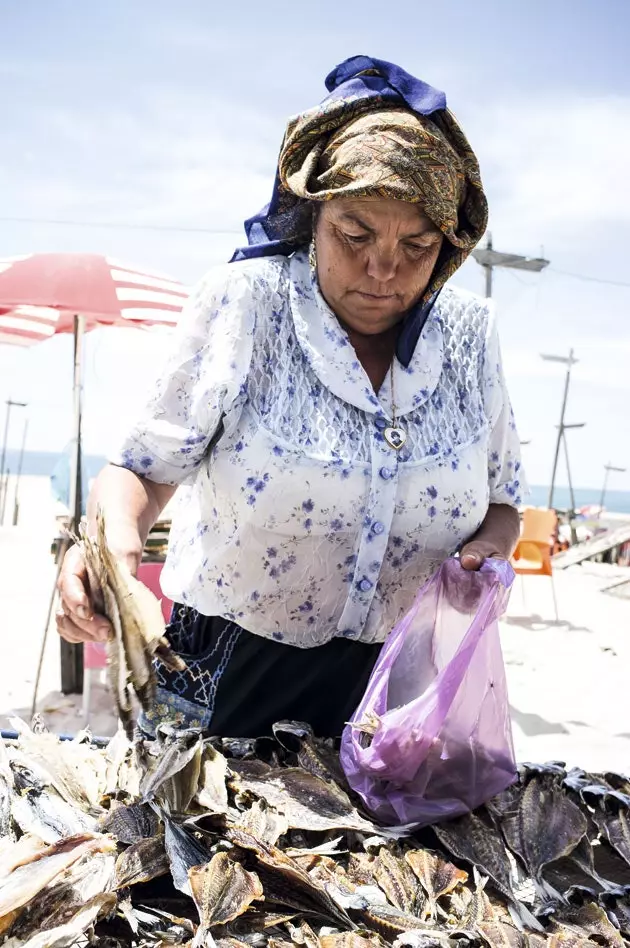
A seller of dried fish
The rest of the days I dedicate myself to discovering the spectacular nature of the area. I ride a horse through the dunes between Porto Covo and Vila Nova de Milfontes , and around the Forte do Pessegueiro . I spend four hours canoeing down the Mira River and enjoying the peaceful surroundings. And I make several routes through the region, taking advantage of strategic stops to eat fish and seafood . On the last day of my trip, about to return to Madrid, I finally find some time to practice surfing. Filipa, my teacher, explains to me how to get on the board and helps me ride my first waves (although her height is not even a tenth of those that Garrett McNamara surfs). After two exhausting hours battling the water, I lay down on the beach. While my pulse normalizes and my breathing calms down, I look towards the Atlantic, the one that has always greatly influenced the culture, food, customs and people of Portugal, and I remember with envy some words that Garrett said to me days ago: “ I am delighted that the ocean is my church, my playground and my office ”.
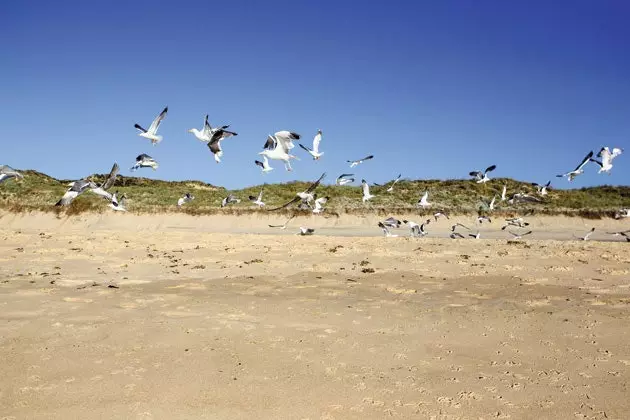
The Southwest Alentejo and Costa Vicentina Natural Park.
* This article is published in the Condé Nast Traveler magazine for October number 77. This issue is available in its digital version for iPad in the iTunes AppStore, and in the digital version for PC, Mac, Smartphone and iPad in the virtual newsstand by Zinio (on Smartphone devices: Android, PC/Mac, Win8, WebOS, Rim, iPad) . Also, you can find us on Google Play Newsstand.
*** You may also be interested in...**
- 20 reasons to leave everything and go to Portugal
- Forbidden to pass by: the Portuguese Alentejo
- Sintra: bizarre and essential Portugal
- From Aveiro to Peniche: a road trip through the center of Portugal
- Good morning, Serra da Estrela!
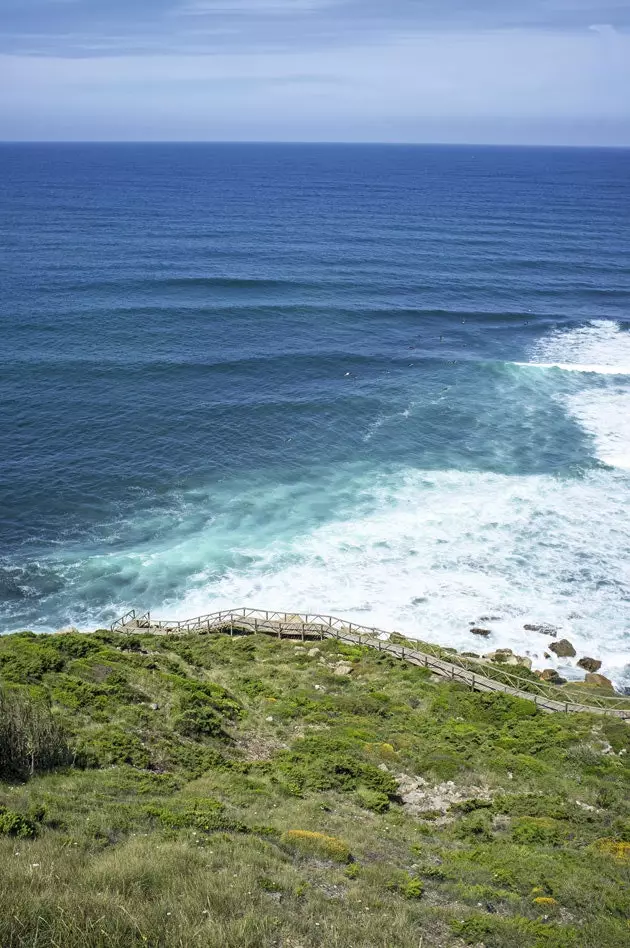
Ribeira d'Ilhas Beach
